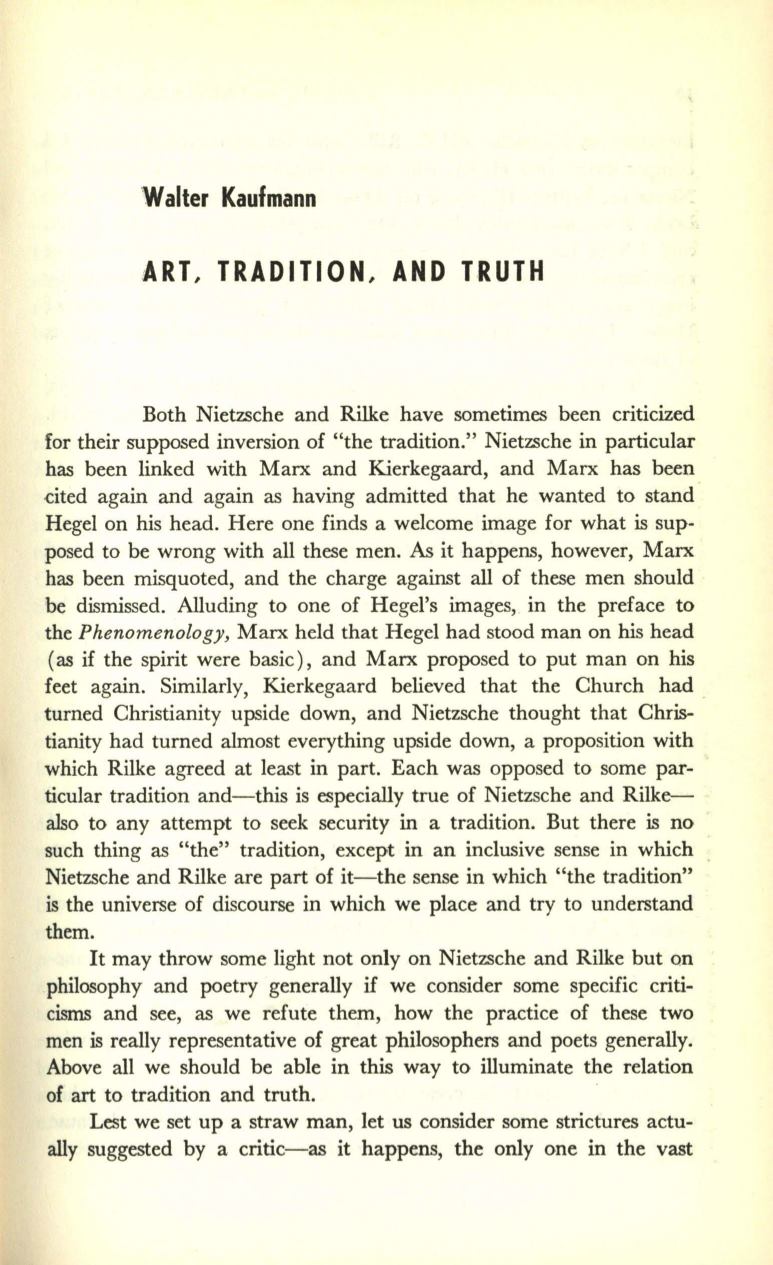
Walter Kaufmann
ART, TRADITION, AND lRUTH
Both Nietzsche and Rilke have sometimes been criticized
for their supposed inversion of "the tradition." Nietzsche in particular
has been linked with Marx and Kierkegaard, and Marx has been
dted again and again as having admitted that he wanted to stand
Hegel on his head. Here one finds a welcome image for what is sup–
posed to be wrong with all these men.
As
it happens, however, Marx
has been misquoted, and the charge against all of these men should
be dismissed. Alluding to one of Hegel's images, in the preface to
the
Phenomenology,
Marx held that Hegel had stood man on his head
(as if the spirit were basic), and Marx proposed to put man on his
feet again. Similarly, Kierkegaard believed that the Church had
turned Christianity upside down, and Nietzsche thought that Chris–
tianity had turned almost everything upside down, a proposition with
which Rilke agreed at least in part. Each was opposed to some par–
ticular tradition and-this is especially true of Nietzsche and Rilke-–
also to any attempt to seek security in a tradition. But there is no
such thing as "the" tradition, except in an inclusive sense in which
Nietzsche and Rilke are part of it-the sense in which "the tradition"
is
the universe of discourse in which we place and try to understand
them.
It may throw some light not only on Nietzsche and Rilke but on
philosophy and poetry generally if we consider some specific criti–
cisms and see, as we refute them, how the practice of these two
men
is
really representative of great philosophers and poets generally.
Above all we should be able in this way to illuminate the relation
of art to tradition and truth.
Lest we set up a straw man, let us consider some strictures actu–
ally suggested by a critic-as it happens, the only one
in
the vast


